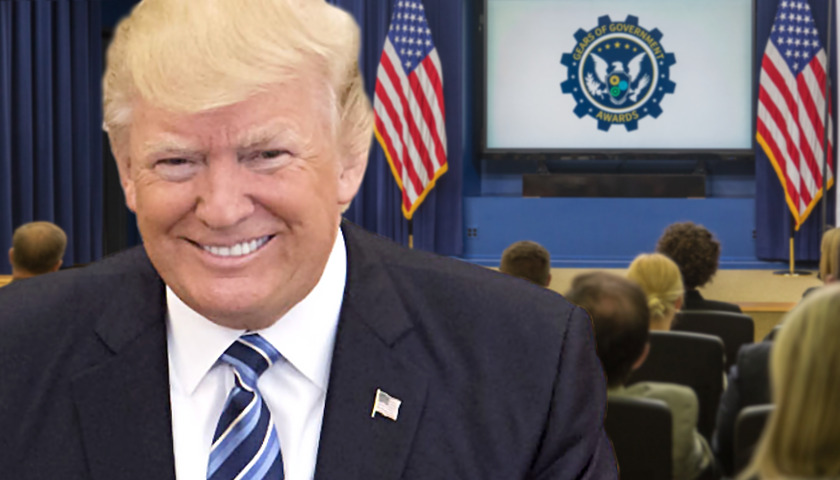by Ned Ryun
By now, only a person living in Alternate Universe One could fail to understand that the past three years have precisely nothing to do with Russian collusion or Ukraine corruption and everything to do with who makes decisions about American policy: the duly elected president of the United States or the administrative state. That is the struggle right now. The crux is a struggle between advocates of our constitutional republic and those who prefer government by an administrative state composed of unelected elites.
There are no guarantees about who will win the fight.
The first public impeachment inquiry hearings on Wednesday showed that very clearly: George Kent and William Taylor weren’t witnesses per se as they clearly had witnessed nothing. In reality, they were mere opinionists. It became clear very quickly that Festivus had come early as two self-important bureaucrats took the stand for a grand airing of their grievances with the president over his policy decisions.
While some may call their behavior seditious, there is no doubting these types feel emboldened in today’s political climate. Bolstered by their propagandists in the media, an effete legal system, and a major political party, the administrative state actors are feeling so confident they’ve actually dropped the pretense that there is no such thing as a deep state. Old and broke is “the devil isn’t real.” New and woke is “the devil is real and he’s here for your good.”
But another factor tilts the contest in favor of the administrative state: it’s a rigged numbers game pure and simple.
Let me explain: the Plum Book is the list of every political position to which each new administration may appoint people across the Executive Branch and various agencies when it comes into power. In 2017, the Plum Book listed about 7,000 positions. These ranged from the secretaries of the various departments to the lower-level Schedule C appointees. (These last are known as Sched Cs; before I was a writer in the White House, I was a Sched C at the Pentagon working for Air Force Public Affairs).
While Sched Cs get to do some fun and interesting work, in no way do they have any authority to make decisions about implementing presidential policy across the administration. By the time you remove those 1,400 or so Sched Cs from the equation of those with any real power, along with a few thousand more lower and mid-levels from the 7,000, you’re left in the neighborhood of just a couple of thousand political appointees appointed by the president who have any real authority to implement his policies.
Juxtapose that number against more than 430 departments, agencies, and sub-agencies in our government peopled by nearly 2 million career federal government employees, many of whom have been around for decades inside the various institutions.
A quick survey of political donations from every cycle reveals that only about 4 percent of the District of Columbia voted for Donald Trump in 2016. And if you simply live in Washington, D.C. and ride the Metro with many of these federal employees, as I do, it becomes very clear the overwhelming majority of them are in no way interested in an America First agenda. They are not interested in reducing the size and scope of government; partly because of self-interest and job security, and partly because they hold to a political worldview and a mistaken belief that a large bureaucracy is a sign of progress and a healthy society.
Now for the sake of argument, let’s say every last political appointee with authority to implement the president’s vision is simpatico with him and, moreover, is a political rockstar. That is not only not true but impossible to imagine, especially with the Trump White House. When you have a deeply moderate establishment Republican like Johnny DeStefano running the Office of Presidential Personnel for more than two years inside the Trump White House, perhaps you’re hoping that some America First types get appointments to places of authority, but you cannot expect that such people would fill the majority of the positions.
And, of course, they have not.
But for the sake of argument, let’s say there were thousands of political rockstars sent into the fray to combat nearly 2 million federal employees and implement an America First agenda. Who do you think is going to win that fight, especially given a compressed time frame? Again, these appointees are only there for the duration of that given administration, and many don’t even last that long.
In his second term, Trump needs to be far more serious about personnel and make sure PPO is staffed with America First types who then fill his executive branch and administration with people who are working on his behalf every day. He should clean house at the Republican National Committee while he’s at it and truly make the party into his own.
But before any of that can matter he needs to work on shutting down a department or two – the Department of Energy would be a good place to start – and then devise a plan on how to migrate the 800,000 nonessential federal employees out of government and back into the private sector. Working with and championing a plan by Senators Josh Hawley (R-Mo.) and Marsha Blackburn (R-Tenn.) to send several departments out of D.C. and into the various states, Trump could drain the swamp by breaking apart the administrative state.
Fact is, there really is no way you can win such a rigged game if you continue to play it by the rules laid out by the Left, which is precisely what conservatives have been doing for decades – really since the beginning of the 20th century. Some have done that willingly because they believe in big government so long as they’re the ones controlling the levers of power.
We’re never going to win if we continue down this path. We need to make new rules for the game, and change the dynamic.
– – –
Ned Ryun is a former presidential writer for George W. Bush and the founder and CEO of American Majority.






Really, it doesn’t matter who wins the election,
if enough people wants the Constitution restored, we still have our “GUNS”.
The proposal to distribute Federal agency headquarters around the country, versus constrained in DC, is deeply flawed on many levels. Not least of which undermining the founders intent in having a non-state entity that is DC.
The end result would all but guarantee to: erode the values and social mores of the localities where the agencies relocate; disrupt the local economies to such an extent that young people can no longer afford to live in the communities where their families have lived for generations; and, worst of all, foster even more dependency, not less, on the administrative state.
Ask former California loggers, Oregon ranchers, or Washington farmers how they like feeding at the .gov trough. All three of those economic sectors have been destroyed by the statists and ecofascists and, as such, what were once productive enterprises for the region and for the country, generating wealth, have been destroyed and replaced with consumptive, debt-dependent enterprises that is .gov.
No, just as the author noted, ridding ourselves of the bloat is the better strategy. Retain only those functions necessary to execute in accordance with the U.S. Constitution’s enumerated powers, return everything else to the states and the people, as per the 10th Amendment.
What remains can remain in DC – it is simply much more efficient to be co-located with the seats of government power. Cut the bloat, don’t proliferate it.
If the Lady Senator from Tennessee were truly serious about reducing the administrative state, she’d support S.148 – Federal Reserve Transparency Act of 2019 (https://www.congress.gov/bill/116th-congress/senate-bill/148/text) and sign on as a co-sponsor – but she hasn’t. Too busy playing the globalist and identity politician I suppose.